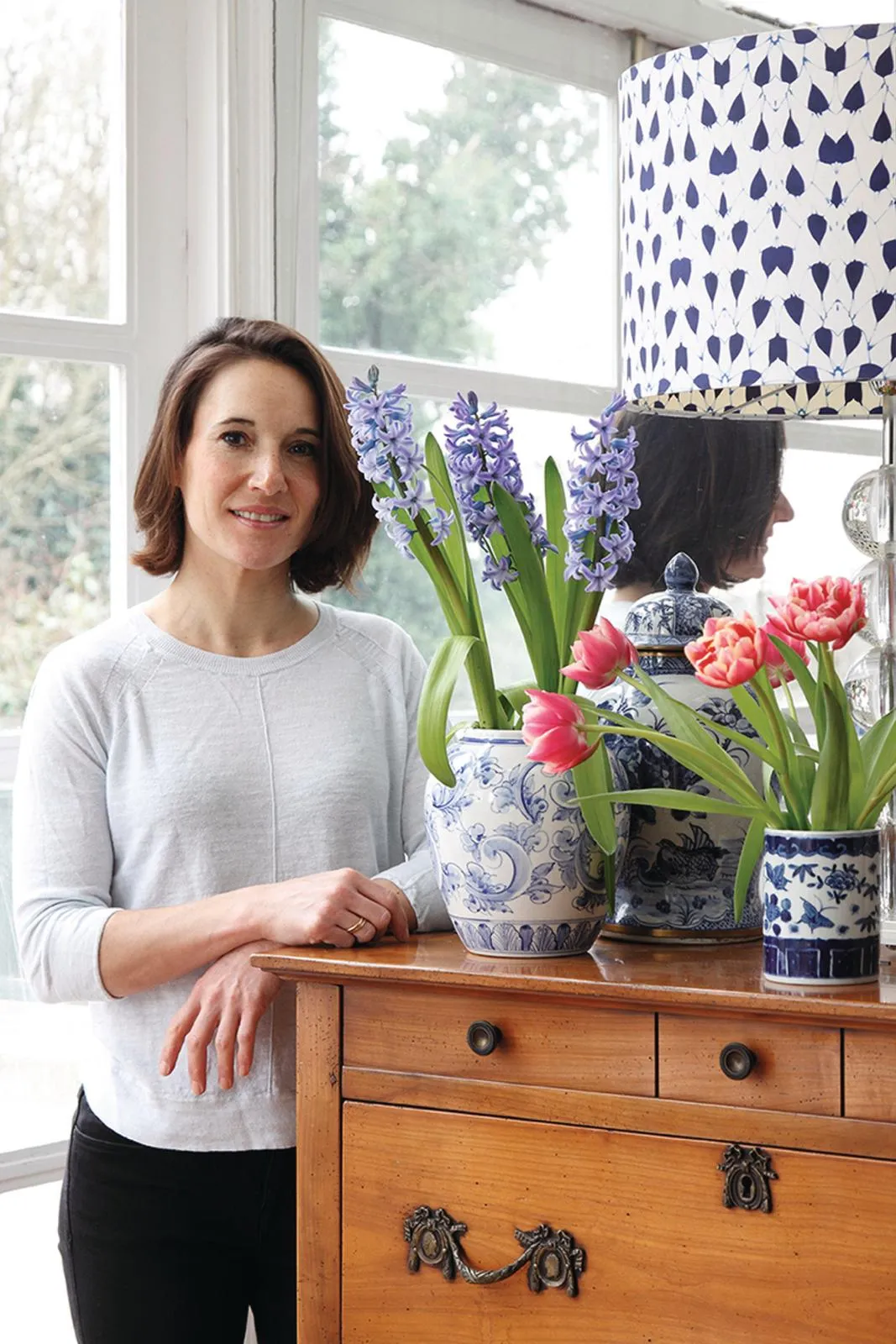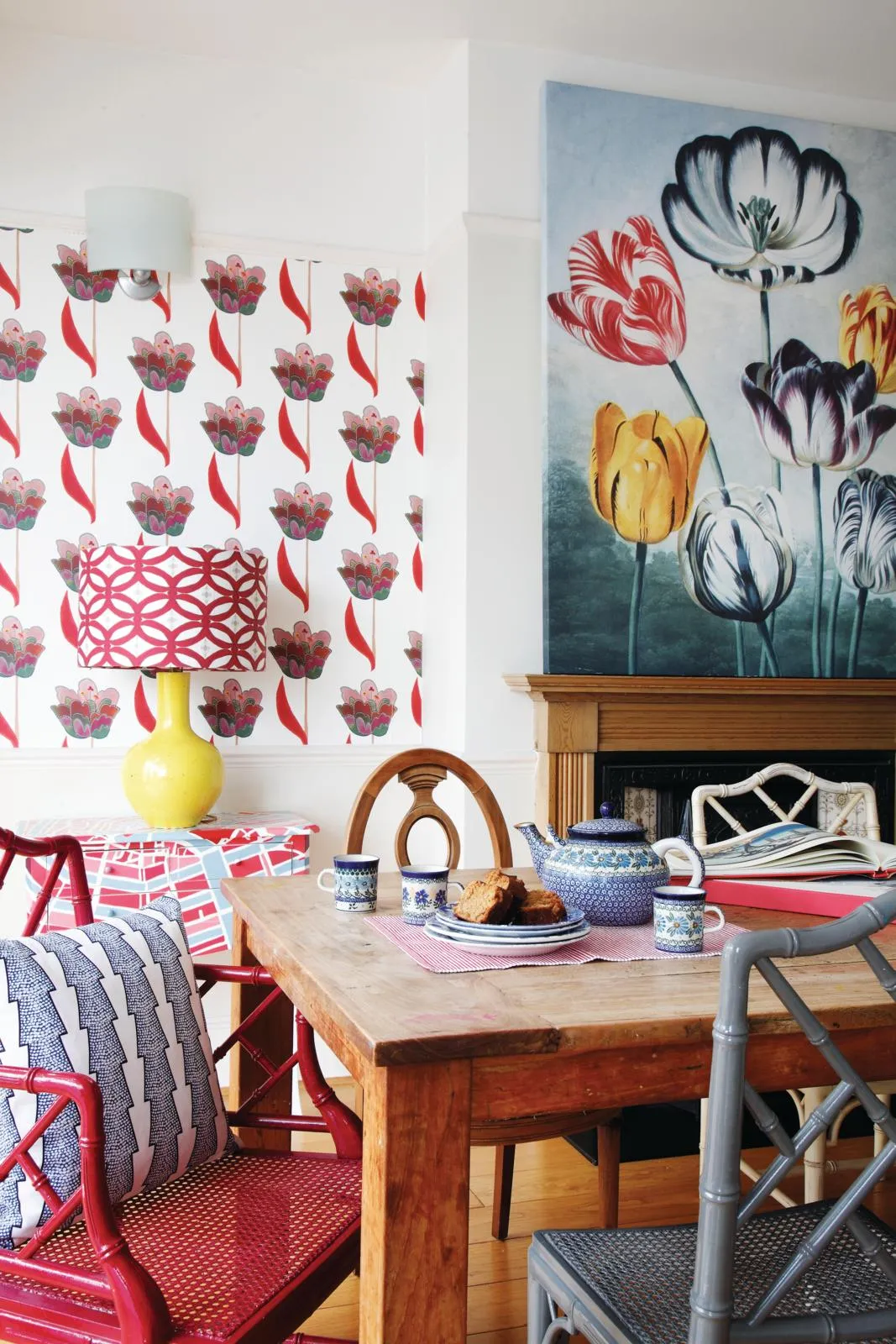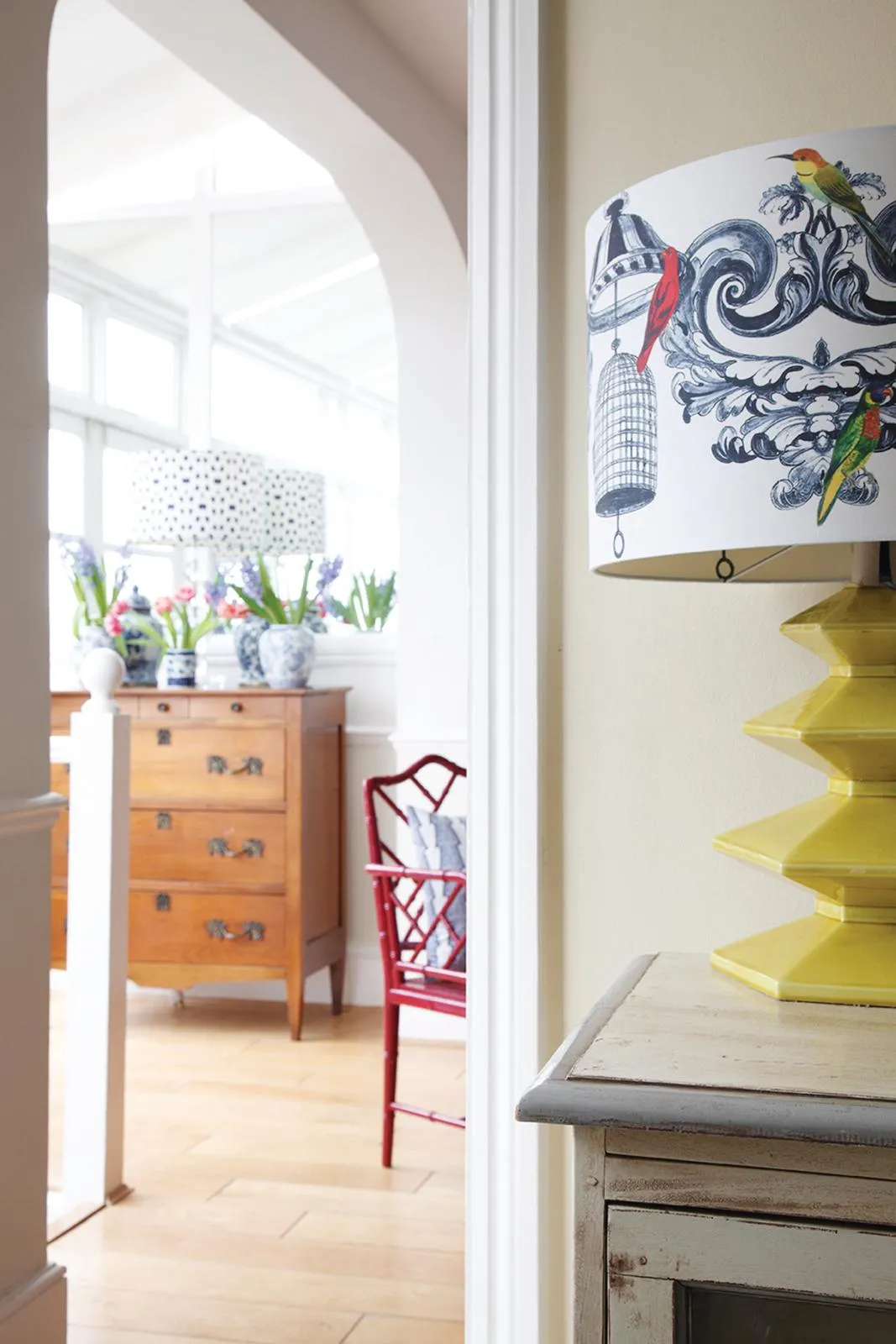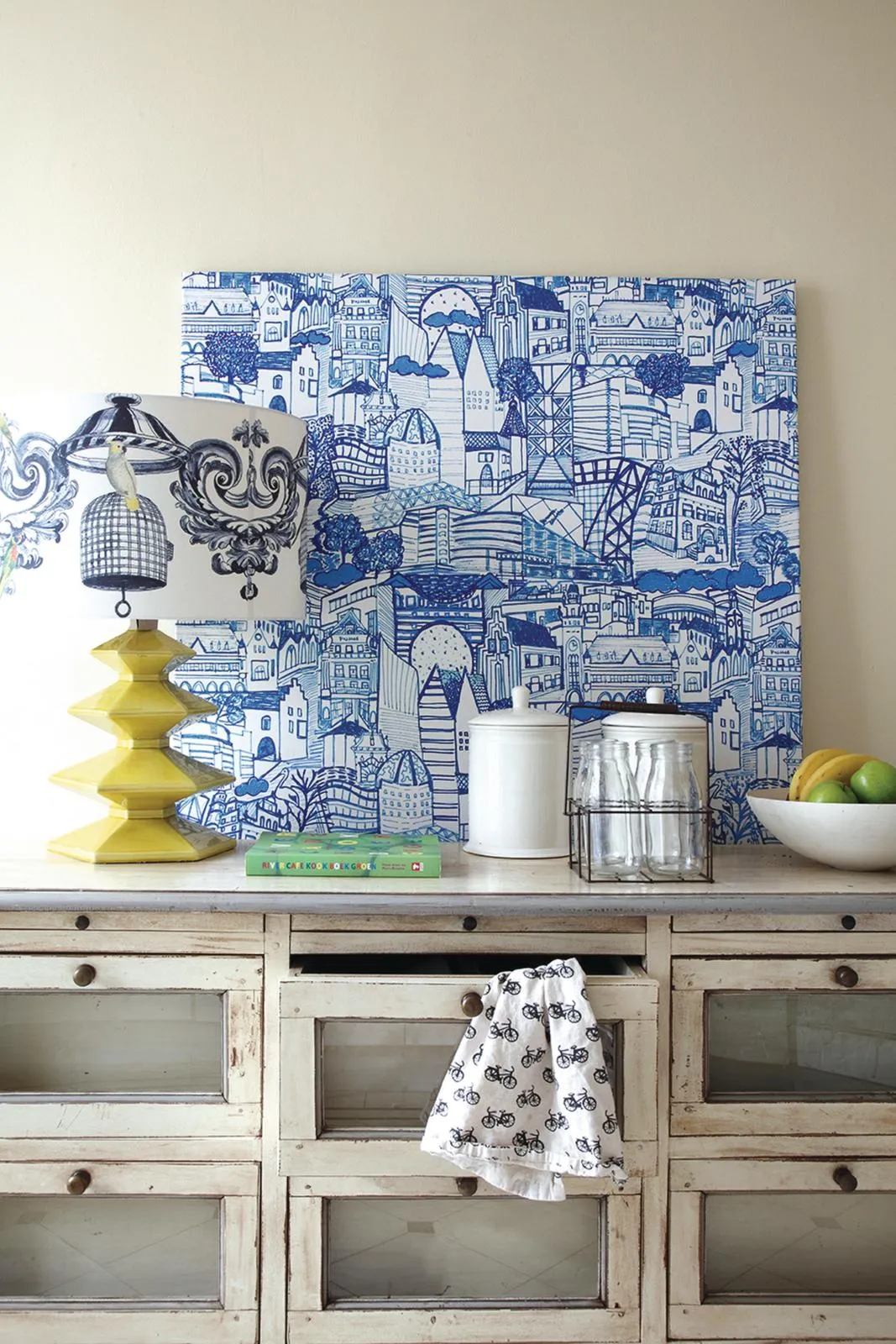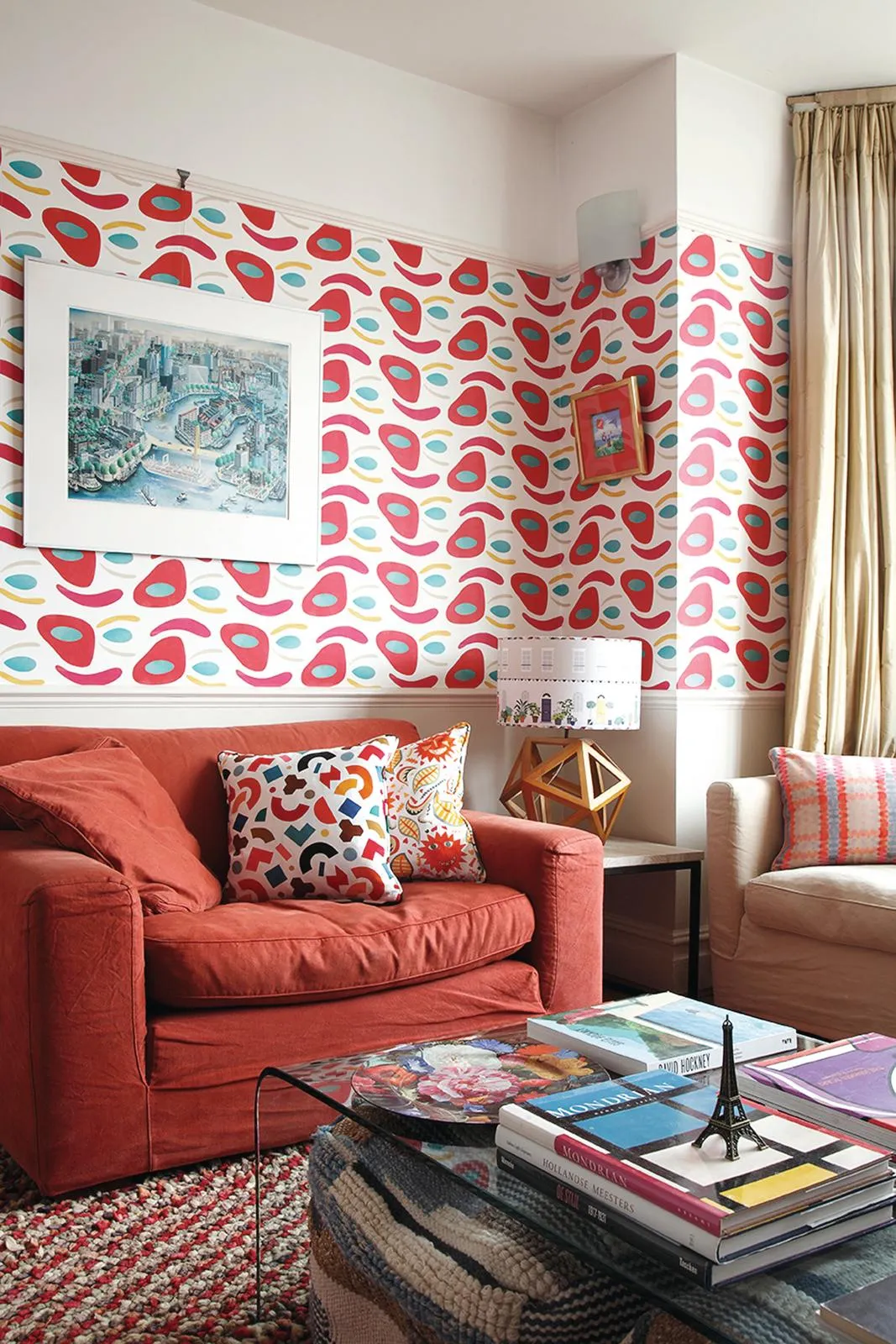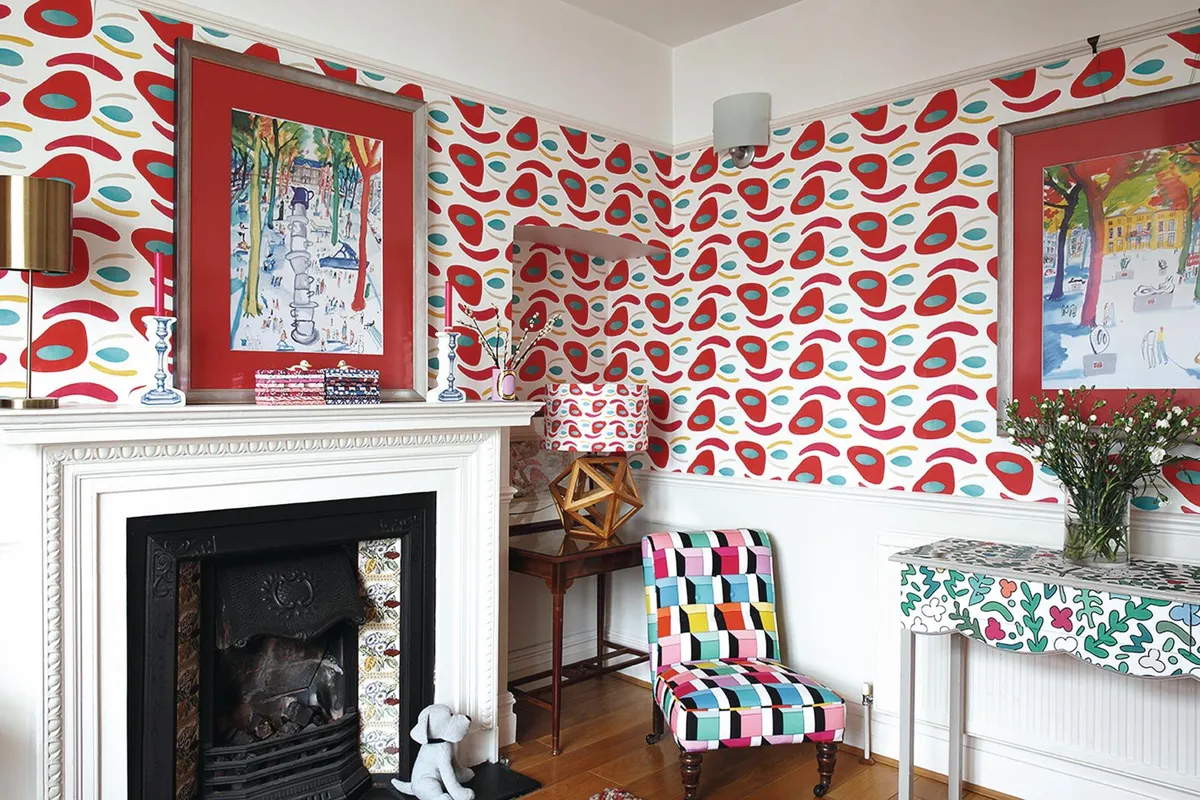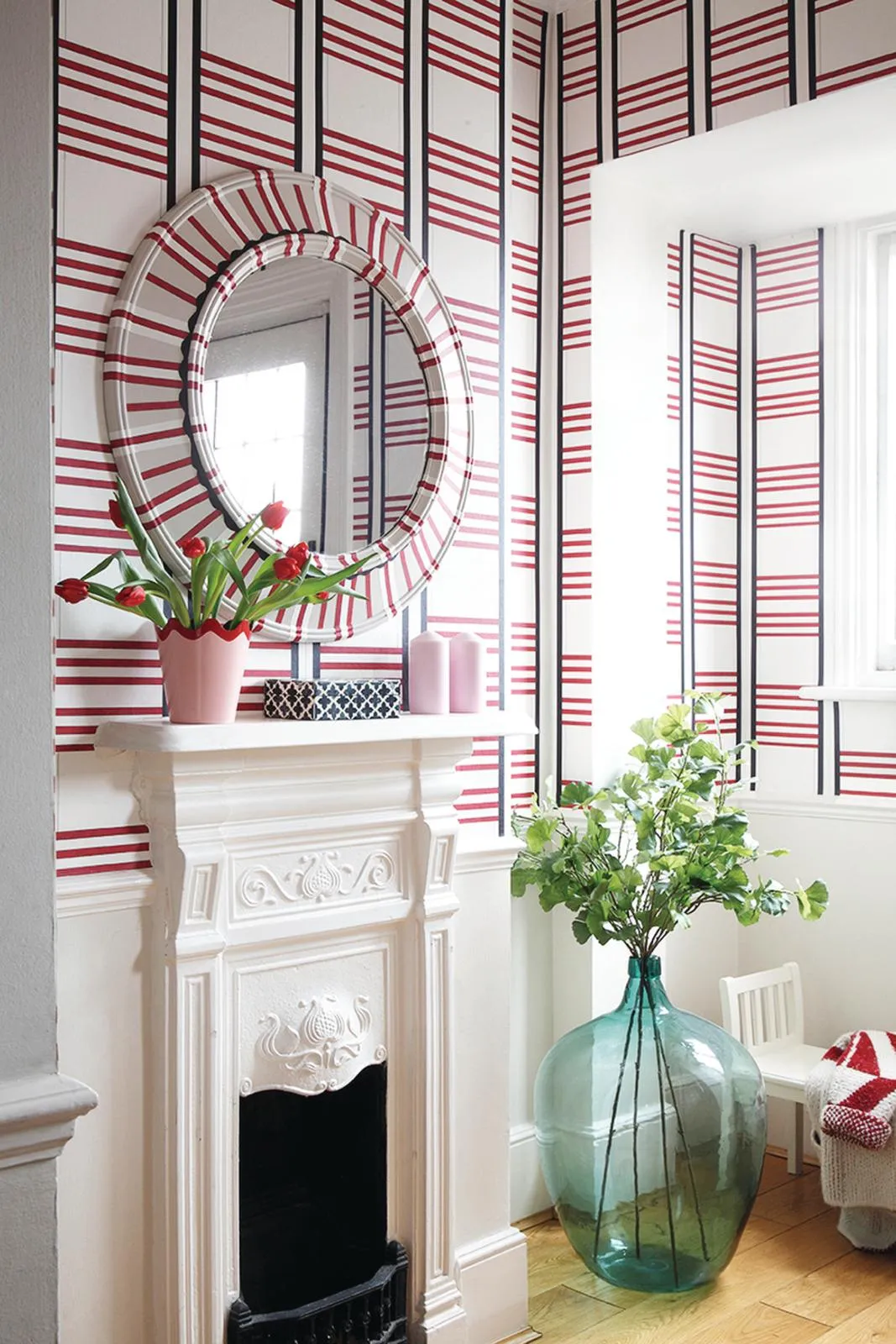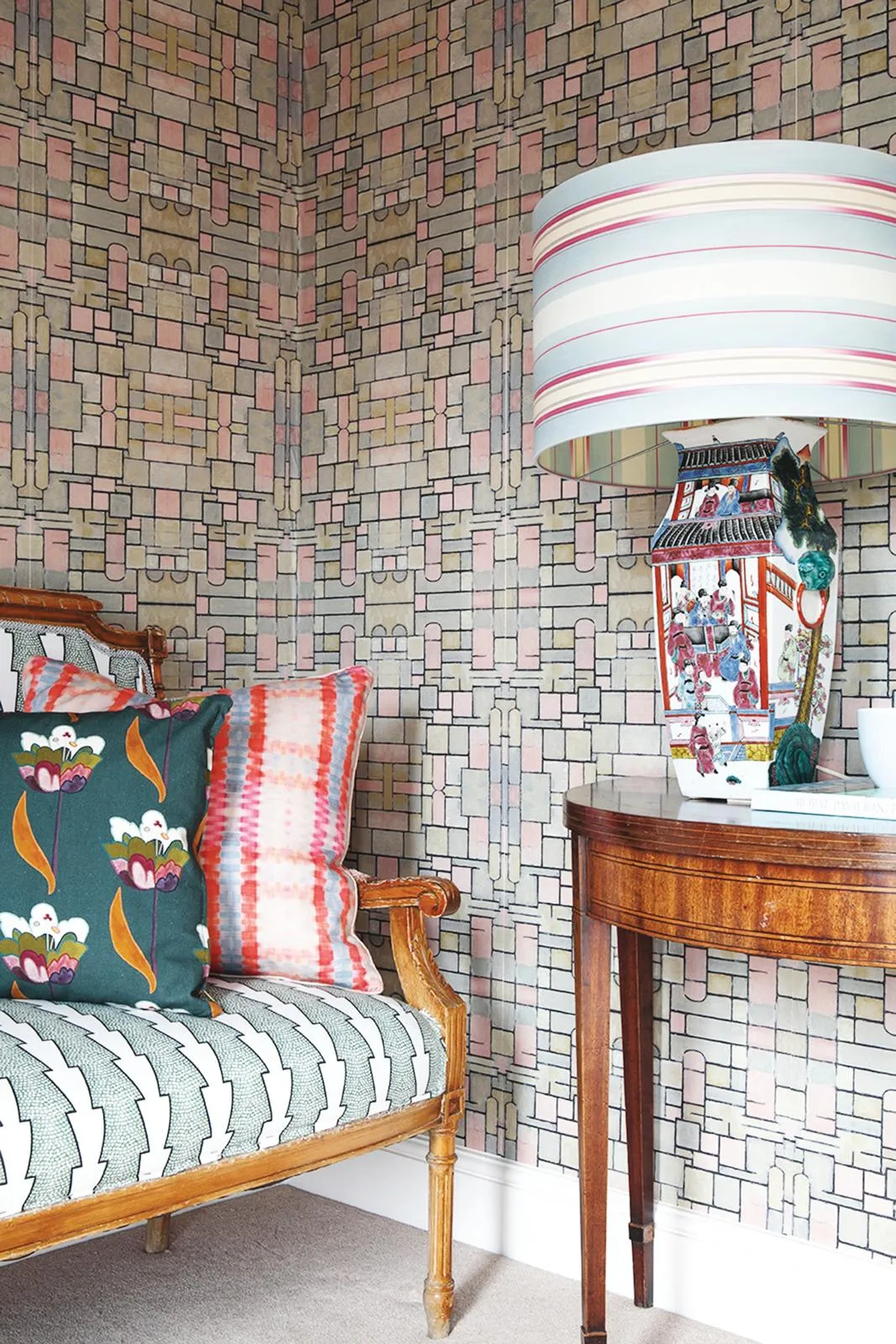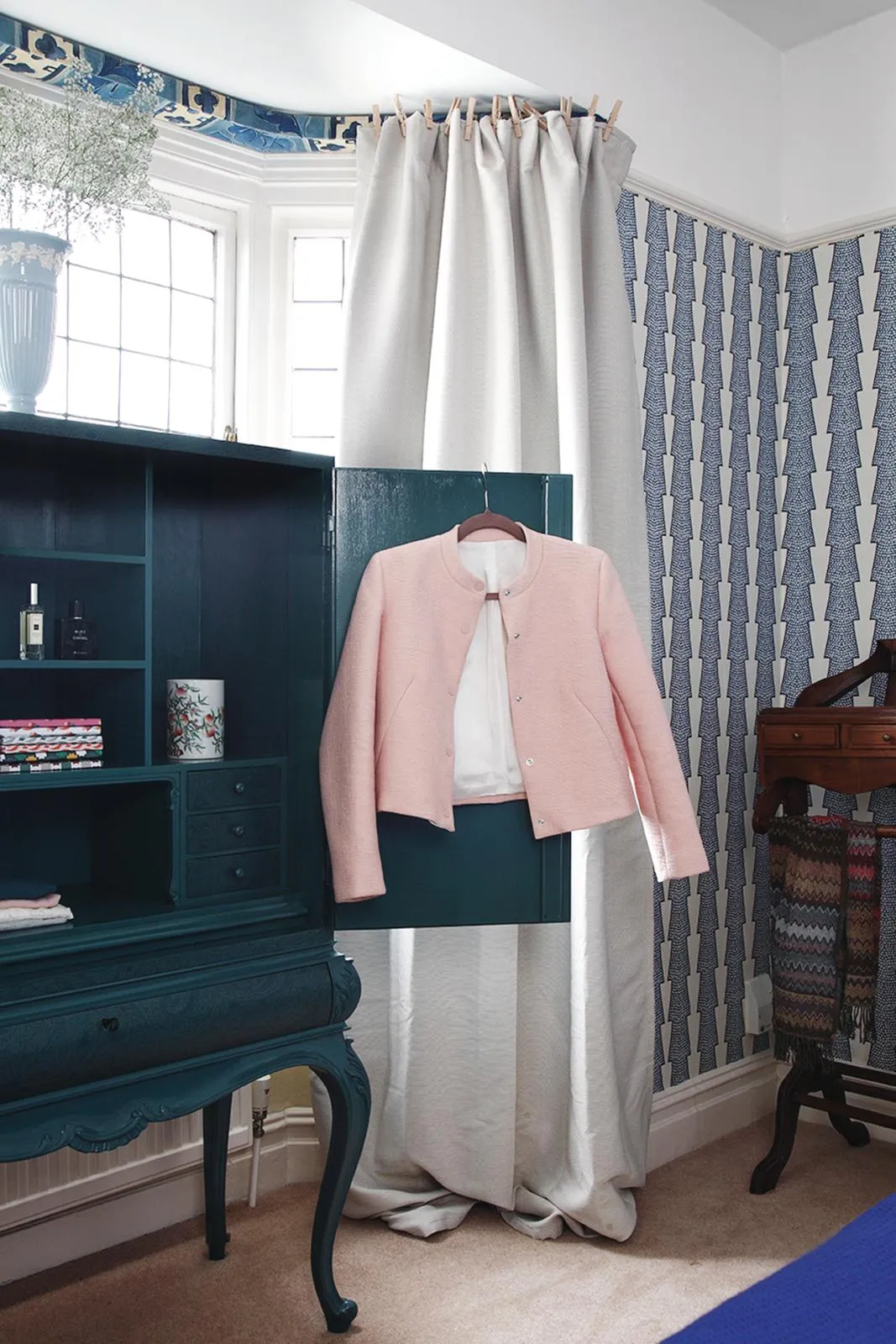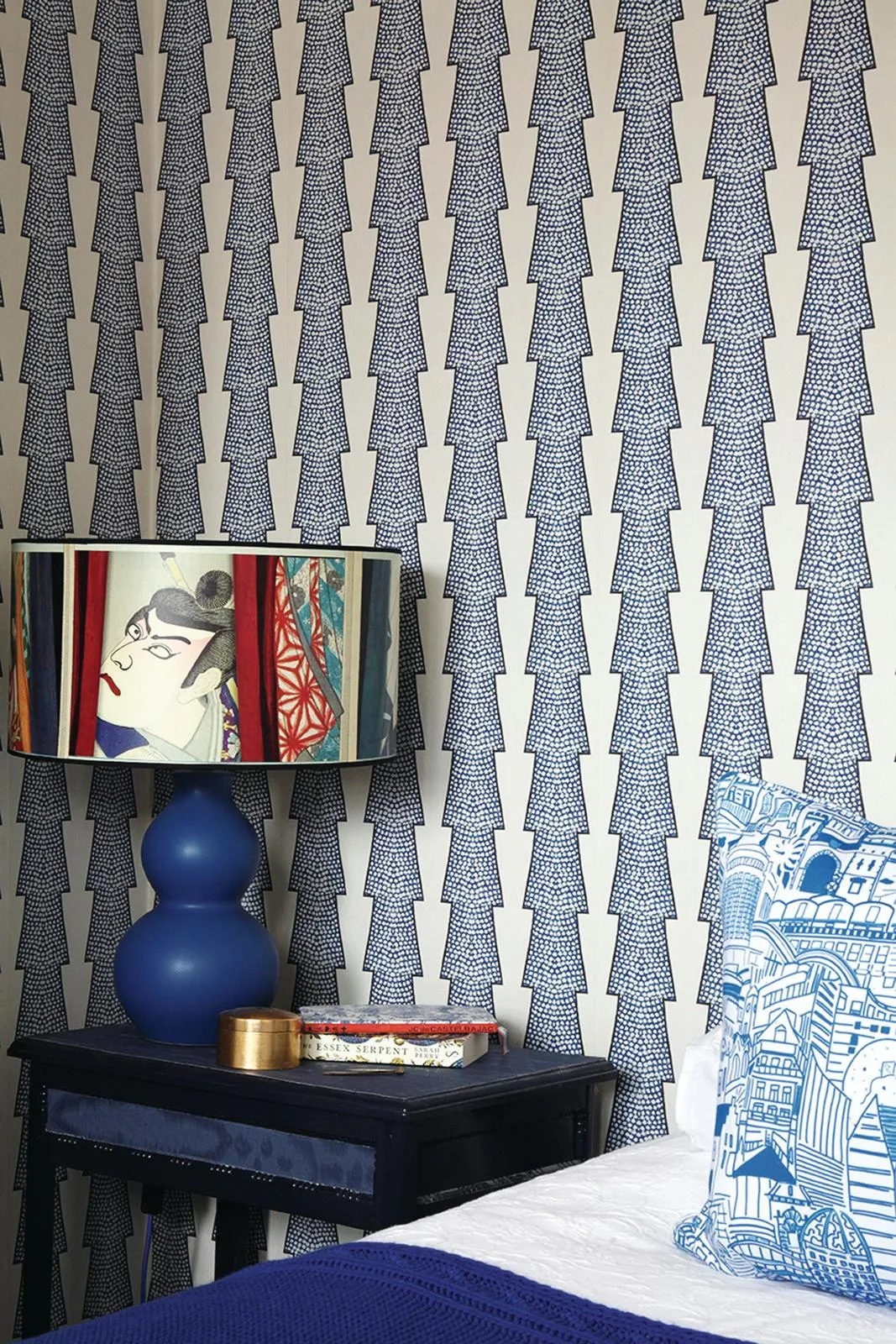A whistle-stop tour of Ottoline de Vries’ London home feels like plunging, head first, into a living swatch book of print and pattern. Mournful Kabuki actors gaze from lampshades, Victorian chairs hum in primary, Pop Art colours, over-scaled tulips cascade across a dining room wall. Like colourful bohemians gatecrashing a sedate garden party, unorthodox clashes of motif and hue bring a rebellious exuberance to the prim, 1930s semi.
‘We Dutch have a saying, “Just be normal, that’s crazy enough”. It’s part of our Calvinistic upbringing; there’s no subtext, we’re direct, we don’t like to overdo things. You can see that in our interiors: Dutch style is calm and minimalist,’ explains Ottoline, a furnishings designer, who moved to Britain from the Netherlands four years ago. ‘But in Britain, you’re much more open to mixing patterns and styles, which is why I felt instantly at home over here.’
Moving from a smaller apartment, Ottoline and her husband were drawn to the tranquillity of the house, which is tucked into a hillside terrace of inter-war properties in north London. ‘The first thing that struck us is the south-facing terrace at the back with its views of the small wood behind. We’re in the middle of the city, but surrounded by tree tops and greenery, so we feel as if we’re in the country.’
Joining an increasing number of Londoners, Ottoline rents her home. This could have been somewhat frustrating for a designer who ‘enjoys a bit of theatre’, but a bland rental interior, coupled with an aesthetically inclined landlady was an incentive to sign the lease, she says.
‘We’re allowed to hang wallpaper and pictures and to put our stamp on the property, so I thought, “Here’s a chance to go a bit crazy with the decoration”.’ Ottoline traces her resourcefulness to growing up, one of four children, in a rambling, antiques-filled house near Haarlem.
‘My mother did everything in the house: made curtains, painted furniture, upholstered antiques. She taught us how to wallpaper a room and how to steam it all off. My mother’s favourite saying is “Where there’s a will there’s a way”,’ she says, pointing out the make-do curtains in the bedroom, which are simple linen panels pegged over the existing drapery.
‘There was no point in making new ones, so I improvised,’ Ottoline explains. Upstairs, a pretty antique desk was a present from her aristocratic grandmother, another key influence. ‘She was a teacher, who taught herself woodworking. She made me a beautiful four-poster bed and a desk.’
In pursuit of a ‘safe profession’, Ottoline trained as a tax lawyer. ‘But when my husband and I bought our first house together in The Hague, I became obsessed with decorating. I wanted to create a wonderful world for my children, wallpapering their rooms and hunting for antiques and vintage furniture. I’d spend my weekends sanding, painting and wallpapering my finds. I fell in love with my new hobby and my day job began to feel like a distraction from what I really wanted to do.’
Friends began to commission pieces of furniture, but the real spark came when Ottoline won a prize in a Rijksmuseum competition to produce a design inspired by the Amsterdam museum’s collection of paintings and prints.
‘I’d done a course on computer design that opened my eyes to a world of possibilities. The past has always inspired my work but I like to use small details – the things others might not notice, like the sash on a Ballets Russes costume, and then reinvent them for a modern look.’
With her eye for the overlooked, Ottoline has peppered the house with antiques and unusual finds. The brightly painted chinoiserie chairs in the dining room are from Amsterdam; ‘I bought them from a guy who lived on a houseboat full of junk – I don’t think he realised how nice they are.’ There are market steals, such as the pretty French chest of drawers or the antique wine bottles that gleam in the hall.
In the dining room, a print of overscaled tulips is a reproduction of a detail in a painting by the 19th-century botanical artist Robert Thornton, whose use of ‘colour and form’ has always captivated Ottoline’s imagination. She turned to the Dutch minimalist De Stijl (The Style) group (their most famous member being Mondrian), for inspiration when it came to designing the hall, which features a graphic, striped wallpaper dashed with pink and burgundy.
The once dowdy sitting room blazes with Pop Art neons in homage to Andy Warhol and a wallpaper inspired by Diaghilev’s Ballets Russes. Japanese woodblock prints from the 19th century were the catalyst for the pendant shade and Spot ‘n Arrow wallpaper in the bedroom.
In the kitchen, where bright pottery and a vintage cabinet enliven bland joinery, a map of The Hague, printed on fabric, is an early work; ‘I uploaded one of my hand-drawn sketches online to have it printed – just out of curiosity. I was amazed by the result.’
Upstairs in the bedroom, the curvy blue cabinet was a junk-shop find, transformed with a paisley paper and lacquer. It is a piece that reminds Ottoline of another family motto. ‘We were always told, if you want something, make it yourself, do something unique. Which is what I’ve tried to do here.’
